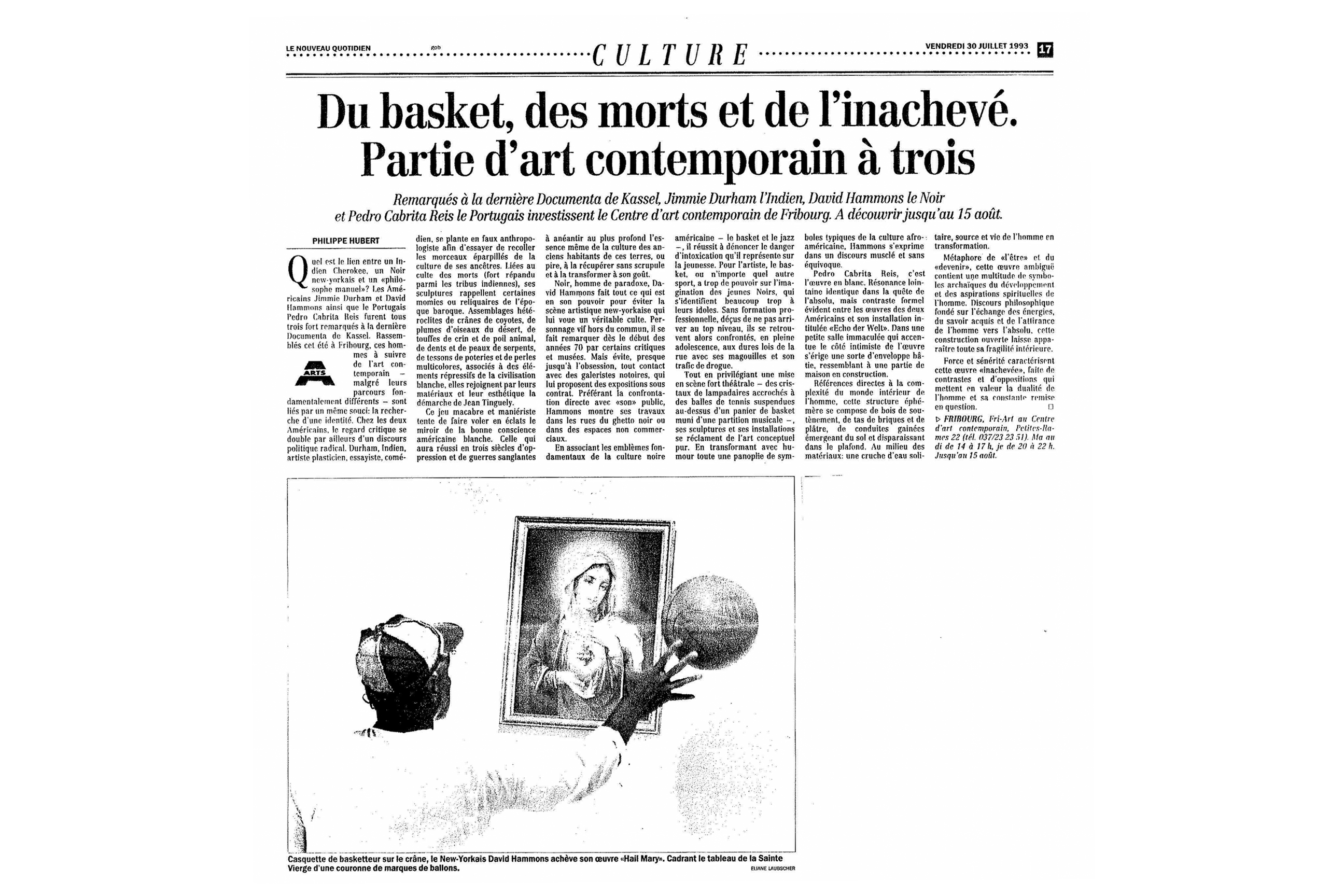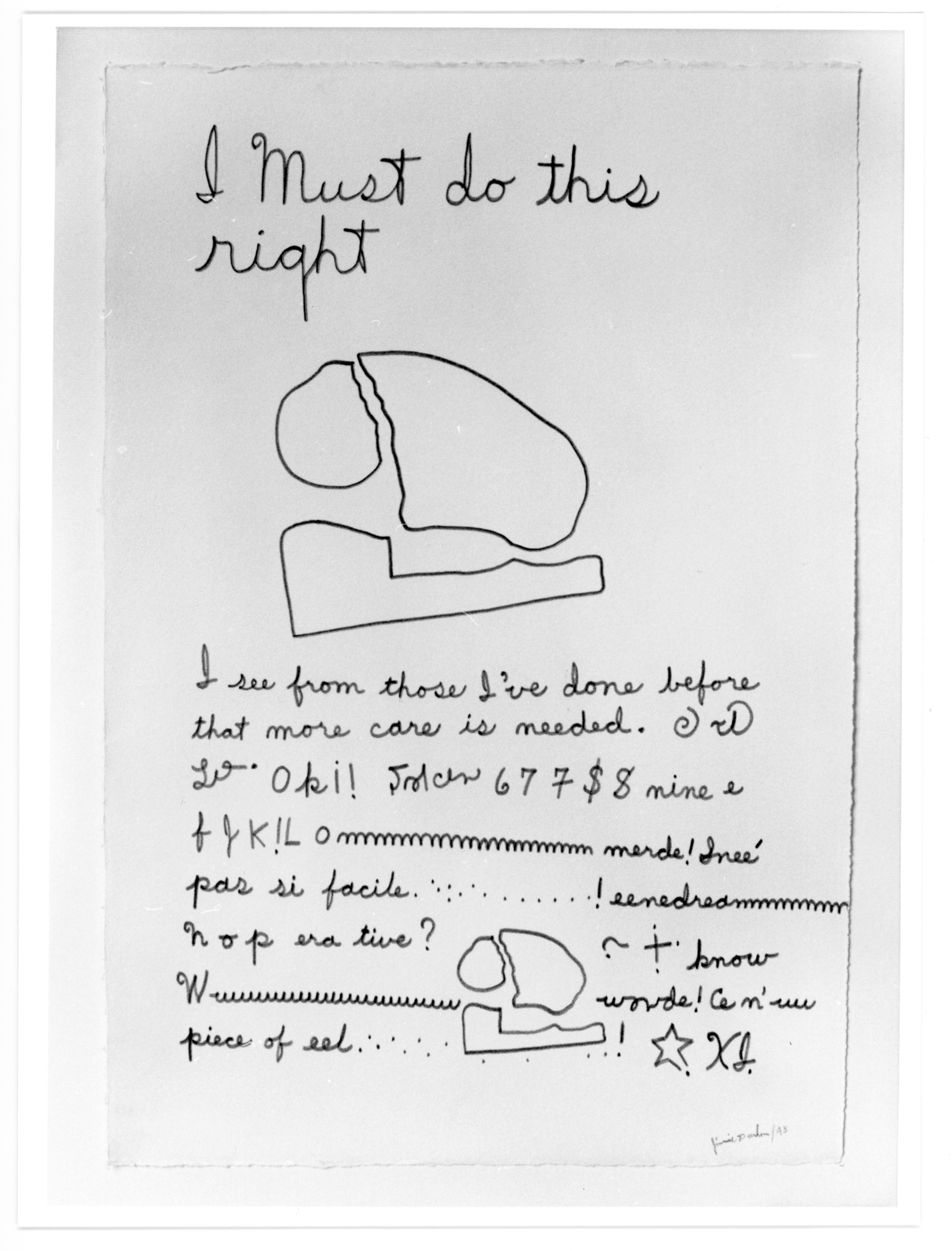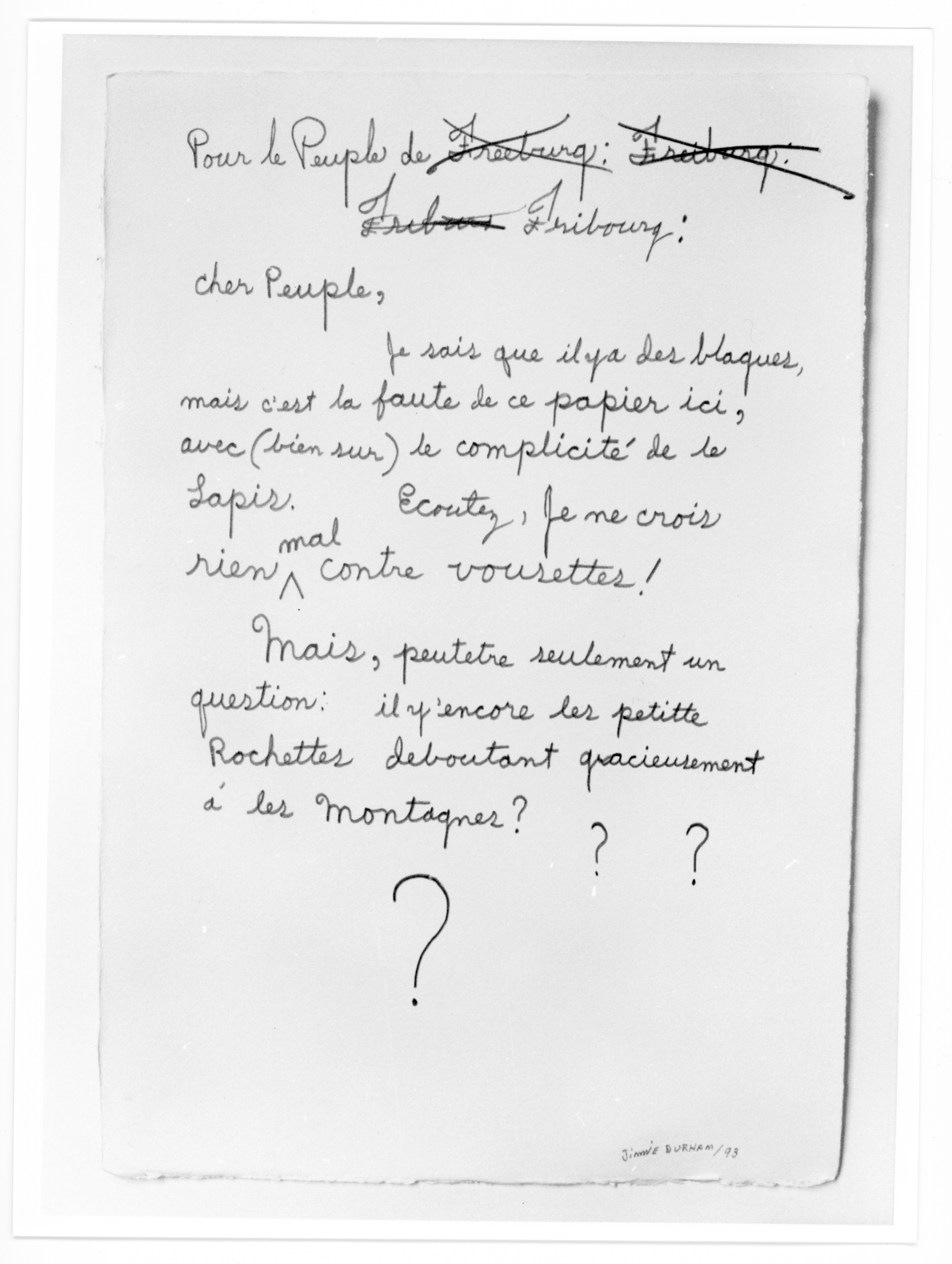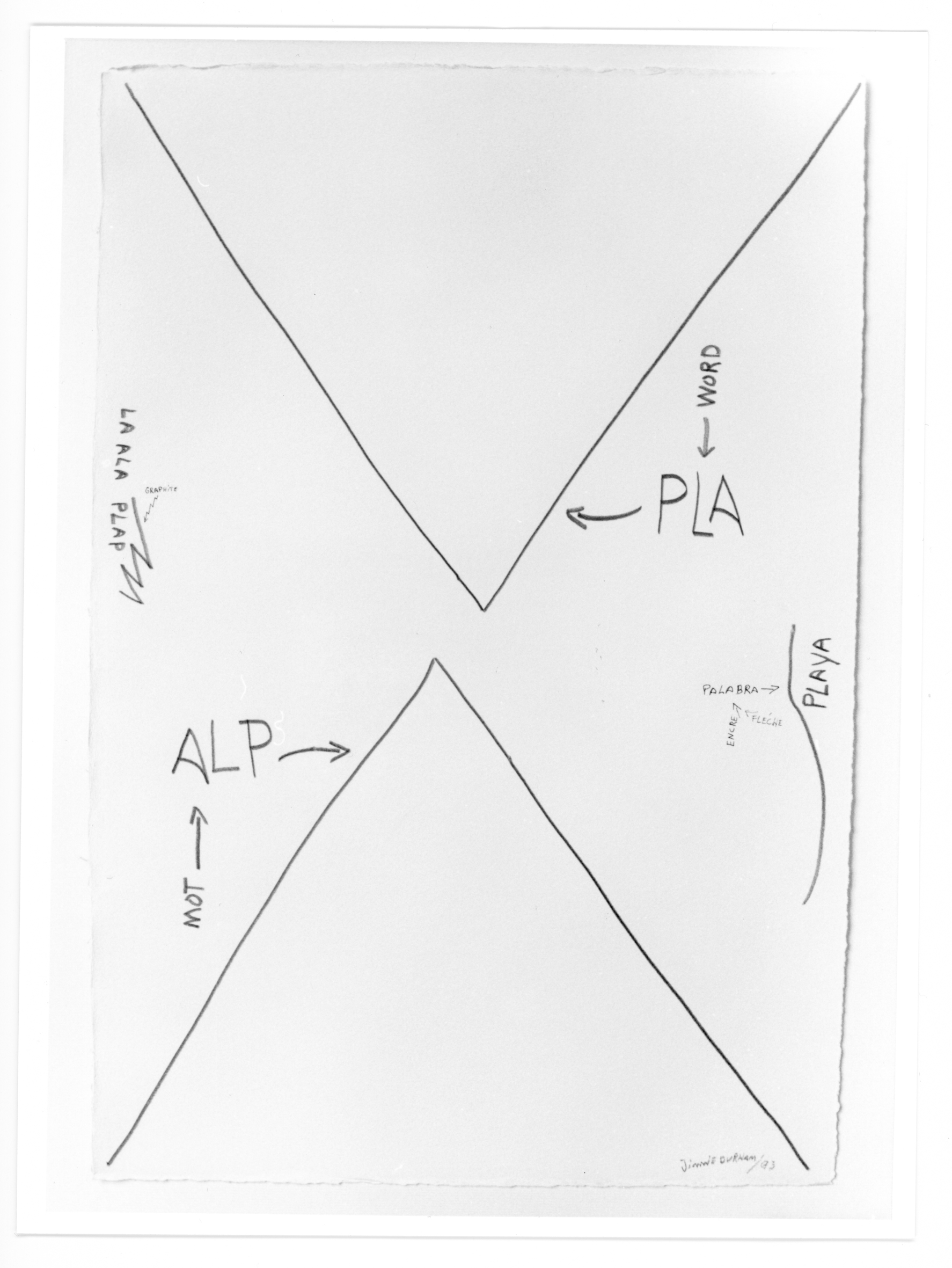1993: The David Hammons and Jimmie Durham exhibitions

“The more we see this sort of work in Switzerland the better: particularly in the climate of ethnic incomprehension and intolerance that is visible in our society on a daily basis.” (Letter from Marc Jancou to Michel Ritter, 1993).
The words of the Swiss gallery owner Marc Jancou addressed to Michel Ritter following the summer 1993 exhibition at Friart seemed to be part of a very necessary realisation. The artistic landscape of the end of the 20th century was still too restricted to the contours of the frontiers of an exclusively white Europe and North America.
In 1993, New York artist David Hammons, who had nevertheless been renowned in the United States since the 1970s, was exhibited in Switzerland for the first time. He presented his work at Friart alongside another American artist Jimmie Durham and the Portuguese Pedro Cabrita Reis. International recognition for these three artists was related to the impact of Kassel’s Documenta IX, an exhibition that provides an inventory of contemporary art every five years and generally has a significant impact on future trends.
Friart exhibited these artists in collaboration with the 10th edition of the Belluard Bollwerk Festival, directed that year by the Belgian curator Cis Bierinckx. The 1993 edition was significant in as much as the qualifier ‘International’ was added to the festival name for the first time and artists of a total of 18 different nationalities were represented. The collaboration between Cis Bierinckx and Michel Ritter opened the way for extensive interventions from three artists, each with their own particular artistic approaches and processes.
David Hammons arrived in Fribourg over a week before the beginning of the exhibition. Charmed by the pure air of a place he was visiting for the first time, he put this aspect to the fore in the works he created on site. Above and beyond the artistic object, the artist sought to create an atmosphere. He opened up the exhibition space and white walls, normally reserved for visitors, to birds that came in through the windows that were left wide open and a cat that wandered through the exhibition space.
Through interventions involving found objects carrying a symbolic charge, Hammons’ practice linked the cultural to the political. The artist is part of the African-American artistic tradition that decentred and critiqued the exhibition format itself. Although part of a very different artistic process to that of Hammons, Jimmie Durham’s approach was just as critical, evoking the injustice of colonisation through heterogenous assemblages, comparing objects that were typical of his cultural background to repressive elements of white civilisation. The artist produced a work specifically for the exhibition that was addressed directly to the people of Fribourg: Cher peuple… [Dear people]. The artistic practices that examine postcolonial and racial questions offer a structural critique of the artistic field and refute the conception of the assignation of identity.
Text written in collaboration with Léa Depestel, presented as part of the exhibition Friart est né du vide. L’esprit d’une Kunsthalle, MAHF Museoscope, 27.08 – 17.10.2021.
Translation: Jack Sims



